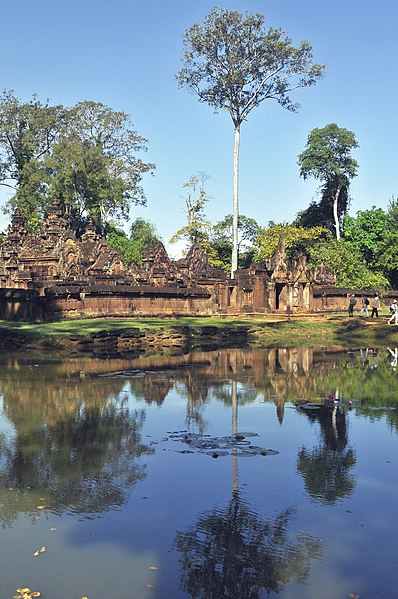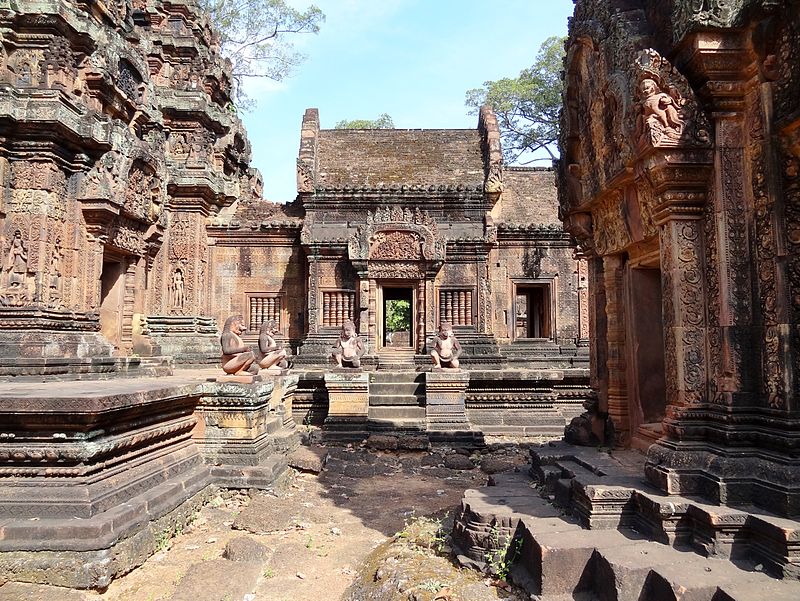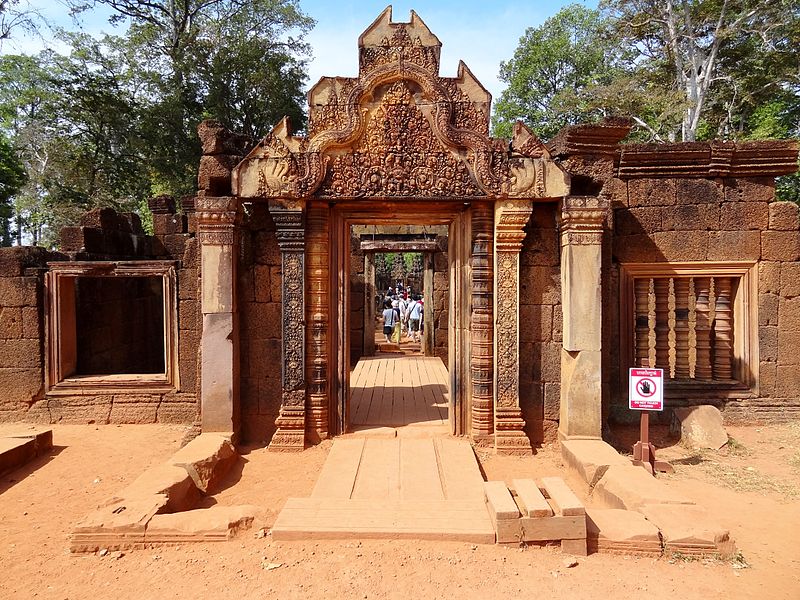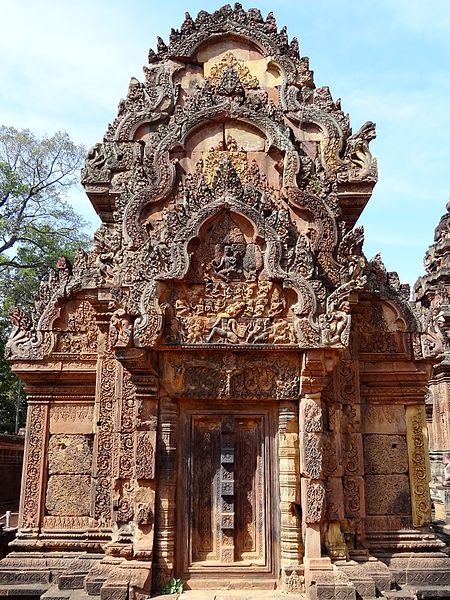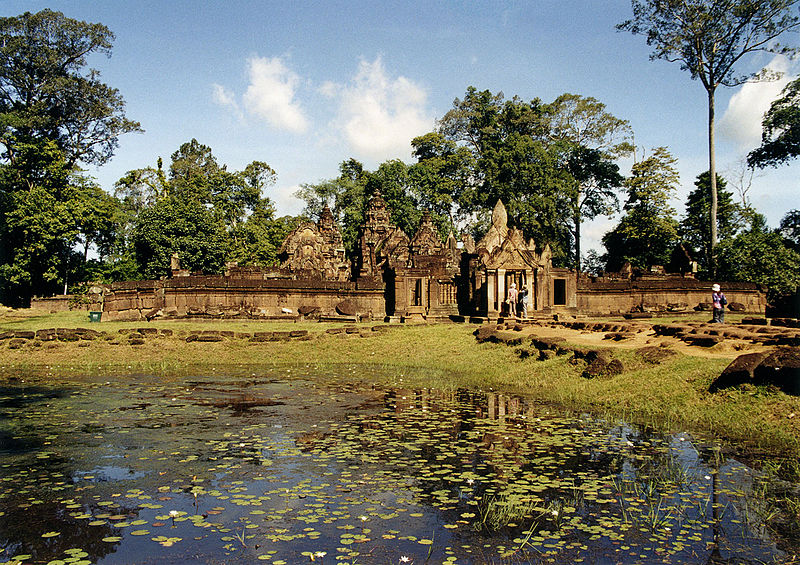Banteay Srei
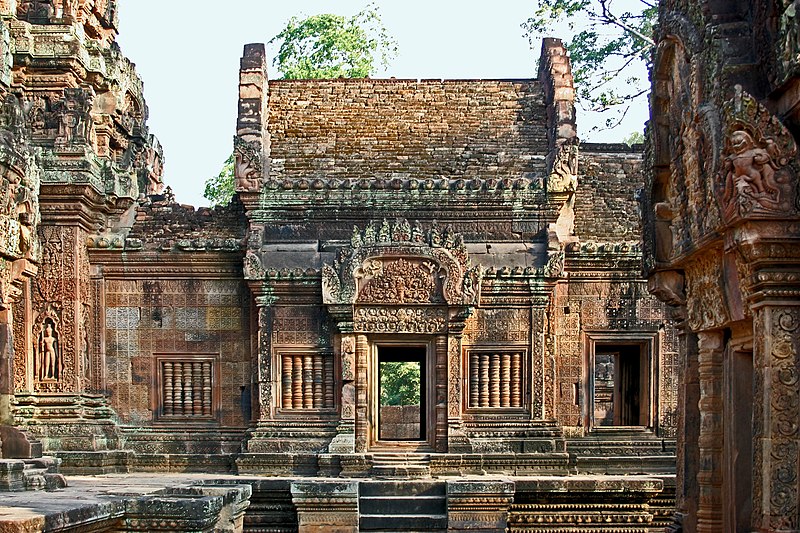
Facts and practical information
Nestled in the heart of Cambodia, Banteay Srei stands as a gem of Khmer architecture, distinguished by its intricate beauty and the richness of its carvings. This 10th-century temple, dedicated to the Hindu god Shiva, is often lauded as the 'Jewel of Khmer Art,' and for good reason. It is located in the area of Angkor, the seat of the ancient Khmer Empire, approximately 25 kilometers northeast of the main group of temples at Angkor Wat.
Constructed from red sandstone, a material that lends itself to the elaborate decorative wall carvings which are still observable in fine detail today, Banteay Srei is unique among Angkor's temples. The stone's warm hues are accentuated by the dawn and dusk light, making these times of day particularly enchanting for visitors.
The temple's name, which translates to 'Citadel of the Women,' is believed to derive from the intricacy of the carvings, thought to be too fine for the hand of a man. This moniker, however, does not reflect the historical fact that Banteay Srei was commissioned by a male royal counselor, Yajnavaraha, rather than by a king, which was the norm for temple constructions of this scale and significance during the era.
Banteay Srei's layout is compact, consisting of three concentric rectangular enclosures constructed on an east-west axis. A causeway leads to the entrance where pediments depict scenes from ancient Indian epics, including the Ramayana. The central sanctuary is adorned with depictions of female deities, further contributing to the temple's name.
Although not as large as some of its neighboring temples, Banteay Srei's charm lies in its remarkable state of preservation and the excellence of its decorative carvings. The temple is one of the smallest sites at Angkor, but what it lacks in size, it more than makes up for in status as one of the most significant relics of Southeast Asian history.
Banteay Srei – popular in the area (distance from the attraction)
Nearby attractions include: Phnom Dei.


